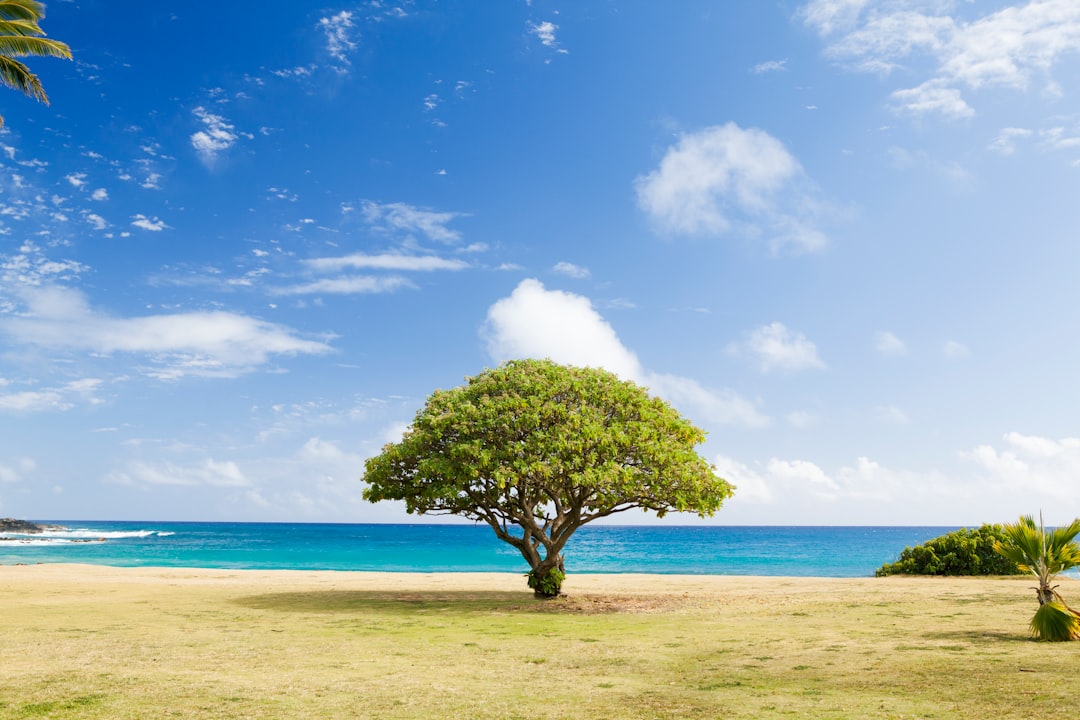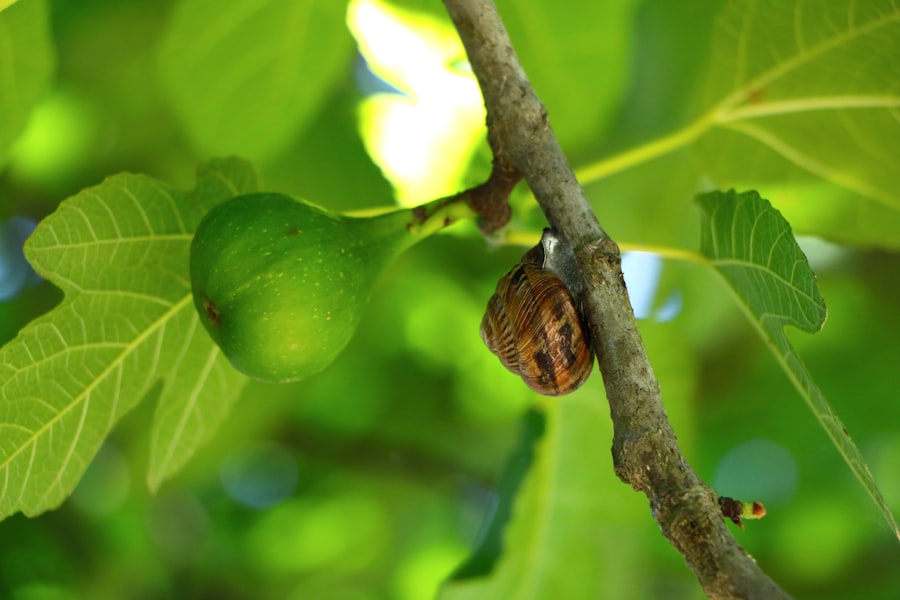Fig Tree Watering: How Much is Enough?

Proper watering is essential for the health and growth of fig trees. Fig trees are known for their ability to tolerate drought conditions, but they still require regular watering to thrive. Watering fig trees correctly can help prevent issues such as leaf drop, fruit drop, and poor fruit production. In this article, we will explore the water needs of fig trees, factors that affect their watering requirements, signs of overwatering or underwatering, how to check moisture levels in the soil, the best time of day to water fig trees, how often to water them, tips for proper watering, and common mistakes to avoid.
Key Takeaways
- Fig trees require proper watering to achieve optimal growth
- Understanding the water needs of fig trees is crucial for proper watering
- Factors such as climate, soil type, and tree age affect fig tree watering requirements
- Signs of overwatering or underwatering include yellowing leaves and root rot
- Checking soil moisture levels and watering in the morning or evening can help maintain proper hydration for fig trees
Understanding the Water Needs of Fig Trees
Fig trees have moderate water requirements. They prefer well-drained soil that is kept consistently moist but not waterlogged. The amount of water a fig tree needs depends on various factors such as climate, soil type, and age of the tree. In general, young fig trees require more frequent watering than mature ones. During the growing season, fig trees need about 1-1.5 inches of water per week. However, it’s important to adjust watering based on weather conditions and other factors.
Factors Affecting Fig Tree Watering Requirements
Several factors can affect the watering needs of fig trees. Climate plays a significant role in determining how much water a fig tree requires. In hot and dry climates, fig trees may need more frequent watering compared to cooler and more humid climates. Soil type also affects watering requirements. Sandy soils drain quickly and may require more frequent watering, while clay soils retain moisture for longer periods and may need less frequent watering. The age of the tree is another factor to consider. Young fig trees have smaller root systems and may need more frequent watering until they establish themselves.
To adjust watering based on these factors, it’s important to monitor the moisture levels in the soil and make adjustments accordingly. This can be done by checking the soil moisture regularly and adjusting watering frequency and duration as needed. It’s also important to consider the weather conditions and adjust watering accordingly. During periods of high heat or drought, fig trees may need more frequent watering to compensate for increased evaporation.
Signs of Overwatering or Underwatering a Fig Tree
| Signs of Overwatering a Fig Tree | Signs of Underwatering a Fig Tree |
|---|---|
| Yellowing leaves | Yellowing leaves |
| Wilting leaves | Wilting leaves |
| Mushy or rotten roots | Dry or brittle roots |
| Fungal growth on soil surface | Cracked or dry soil surface |
| Slow growth or no growth | Stunted growth or no growth |
Overwatering or underwatering a fig tree can have detrimental effects on its health. It’s important to be able to identify the signs of overwatering or underwatering and adjust watering accordingly.
Signs of overwatering include yellowing leaves, wilting, root rot, and a foul smell coming from the soil. Overwatered fig trees may also have stunted growth and poor fruit production. On the other hand, signs of underwatering include drooping leaves, dry and brittle branches, and slow growth. Underwatered fig trees may also have small and shriveled fruits.
To address overwatering, reduce the frequency and duration of watering. Allow the soil to dry out between waterings to prevent root rot. To address underwatering, increase the frequency and duration of watering. Ensure that the soil is thoroughly soaked during each watering session.
How to Check Moisture Levels in Soil for Fig Trees
Checking the moisture levels in the soil is crucial for determining when it’s time to water fig trees. There are several methods you can use to check soil moisture levels.
One method is the finger test. Insert your finger into the soil up to the second knuckle. If the soil feels dry at that depth, it’s time to water. If it feels moist, wait a few more days before watering.
Another method is using a moisture meter. These devices can be inserted into the soil to measure the moisture content accurately. Follow the instructions provided with the moisture meter to interpret the readings and determine when it’s time to water.
You can also use a trowel or a small shovel to dig a small hole in the soil near the base of the tree. Examine the soil at different depths to determine its moisture content. If the soil is dry several inches below the surface, it’s time to water.
Best Time of Day to Water Fig Trees

The best time of day to water fig trees is early in the morning or late in the afternoon. Watering during these times allows the foliage to dry before evening, reducing the risk of fungal diseases. Avoid watering during the hottest part of the day, as this can lead to excessive evaporation and water loss.
Watering in the morning also allows the tree to take up water throughout the day, providing it with the necessary hydration for optimal growth. Watering in the afternoon or evening can lead to water sitting on the leaves overnight, which can promote fungal growth and disease.
How Often Should You Water Fig Trees?
The frequency of watering fig trees depends on various factors such as climate, soil type, and age of the tree. In general, fig trees should be watered deeply once a week during the growing season. However, it’s important to adjust watering frequency based on weather conditions.
During periods of high heat or drought, fig trees may need more frequent watering. Monitor the moisture levels in the soil and adjust watering accordingly. If the soil feels dry several inches below the surface, it’s time to water again.
It’s important not to overwater fig trees, as this can lead to root rot and other issues. Allow the soil to dry out between waterings to prevent overwatering.
Tips for Proper Fig Tree Watering
To ensure proper watering for fig trees, consider implementing the following tips:
1. Use mulch: Apply a layer of organic mulch around the base of the tree to help retain moisture in the soil and prevent weed growth. Mulch also helps regulate soil temperature and reduces evaporation.
2. Avoid overhead watering: Water the base of the tree directly, avoiding wetting the foliage as much as possible. Overhead watering can promote fungal diseases and waste water through evaporation.
3. Water deeply: When watering, ensure that the water penetrates deeply into the soil to encourage deep root growth. Shallow watering can lead to shallow root systems, making the tree more susceptible to drought stress.
4. Consider drip irrigation: Drip irrigation systems deliver water directly to the base of the tree, minimizing water waste and ensuring efficient watering.
Avoiding Common Mistakes When Watering Fig Trees
When it comes to watering fig trees, there are some common mistakes that should be avoided:
1. Overwatering: Overwatering can lead to root rot and other issues. It’s important to allow the soil to dry out between waterings to prevent overwatering.
2. Underwatering: Underwatering can cause stress to the tree and result in poor growth and fruit production. Monitor the moisture levels in the soil and adjust watering frequency accordingly.
3. Watering at the wrong time of day: Avoid watering during the hottest part of the day, as this can lead to excessive evaporation and water loss. Water in the early morning or late afternoon instead.
4. Neglecting to check soil moisture levels: It’s important to regularly check the moisture levels in the soil to determine when it’s time to water. Relying solely on a fixed watering schedule may result in overwatering or underwatering.
Achieving Optimal Fig Tree Growth with Appropriate Watering
Proper watering is crucial for achieving optimal growth and fruit production in fig trees. Understanding the water needs of fig trees, monitoring soil moisture levels, and adjusting watering based on various factors such as climate and soil type are essential for maintaining the health and vitality of fig trees. By following the tips and guidelines outlined in this article, you can ensure that your fig trees receive the appropriate amount of water and thrive in your garden or orchard.
If you’re wondering how much water your fig trees need, you’ll find some valuable insights in this related article from Lawn World. Understanding the water requirements of fig trees is crucial for their optimal growth and fruit production. To learn more about this topic, check out the article on Lawn World’s website: How Much Water Do Fig Trees Need?
FAQs
What is the ideal amount of water for fig trees?
Fig trees require regular watering, especially during the growing season. They need about 1-1.5 inches of water per week, either from rainfall or irrigation.
When should I water my fig tree?
Water your fig tree deeply once a week during the growing season, and reduce watering during the dormant season. Watering should be done early in the morning or late in the evening to avoid evaporation.
What happens if I overwater my fig tree?
Overwatering can lead to root rot and other fungal diseases, which can harm or even kill the tree. It is important to ensure that the soil is well-drained and not waterlogged.
What happens if I underwater my fig tree?
Underwatering can cause the tree to wilt and its leaves to turn yellow or brown. It can also lead to poor fruit production and stunted growth. It is important to monitor the soil moisture and water the tree regularly.
Can I use tap water to water my fig tree?
Yes, tap water can be used to water fig trees. However, if the water in your area is high in salts or minerals, it may be beneficial to use rainwater or distilled water instead.
Can I water my fig tree with a sprinkler?
While sprinklers can be used to water fig trees, it is not the most efficient method. It is better to use a drip irrigation system or water the tree directly at the base to ensure that the water reaches the roots.



